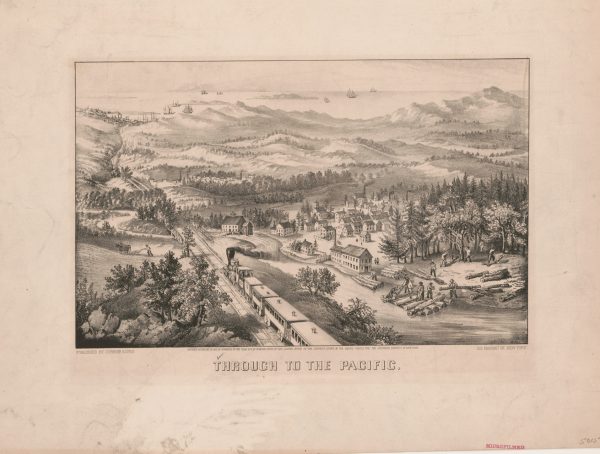Work and Respect
Homeschooling gives parents the opportunity to teach their children the worth of every person. It is easy, even for parents, to consider the gifts of one child as more acceptable than the gifts of another child. Every person deserves respect–those who take care of our teeth, those who take care of our pipes, those who put out our fires, those who take care of our garbage, those who hand us our food–and those who take a while to learn to read or figure or write legibly.
I recently wrestled with the ending of a lesson about the Transcontinental Railroad. During the Civil War, enslaved people worked on the railroad. After the war, Chinese worked on the railroad. Irishmen worked on the railroad. Railroad owners didn’t treat any of those groups completely fairly.

One of the images I had that I could use in the lesson showed the interior of a “palace hotel” car. In this image from a newspaper dated around the same year that workers completed the Transcontinental Railroad, an African American porter carried a tray down the aisle. After the Civil War, railroads hired many who had once been enslaved to serve as porters on trains. Porters did many services for wealthy passengers, such as serving food, carrying baggage, shining shoes, and making beds. Their pay was not what it should have been, nor did they receive the respect they deserved.
This is what I told the children at the end of the lesson:
When Jesus died on the cross for every person, He proved the worth of every human being. However, through the centuries people have disrespected people they saw as different from themselves. Railroad owners did not pay porters well and porters did not receive the respect that they deserved. Many Americans did not treat the Chinese as equals. The Irish also suffered from discrimination. The Transcontinental Railroad changed life forever for the native nations of the Plains and Great Basin. The Pawnee nation welcomed the railroad and helped them. Other native people sometimes attacked the railroad. We must learn from this part of our history and decide to respect everyone.
The people who worked on the Transcontinental Railroad were people made in God’s image. Working together, they used the intelligence and strength God gave them to build the railroad that connected east and west. Bankers and the U.S. government invested money. Entrepreneurs took financial risks. Engineers designed. Surveyors surveyed the route. Foremen oversaw laborers. Teamsters drove wagons. Laborers unloaded them. They dynamited earth to make it lower and filled in ravines to make it higher. They blasted and dug tunnels and built bridges. They plowed and scraped until the railroad bed was ready for tracks. They laid railroad ties, laid tracks, bolted tracks together, and hammered in spikes. Cooks fed them. A force of 800 Pawnee men protected railroad crews and the livestock they carried with them for meat. Others supplied the workers what they needed to live and the tools and materials they needed to do their jobs.
Around the same time I was wrestling with that ending, I was listening to Laura Ingalls Wilder’s By the Shores of Silver Lake. She and Pa have a discussion about building a railroad. They determine that the first step of building something like a railroad is an idea in someone’s head.
We can have those ideas because we are made in the image of God.
It takes us all to accomplish what needs to be done. You have the opportunity to teach your children to contribute–and to respect all of the others who contribute, too.
Whatever you do, do your work heartily,
as for the Lord rather than for men . . .
Colossians 3:23

